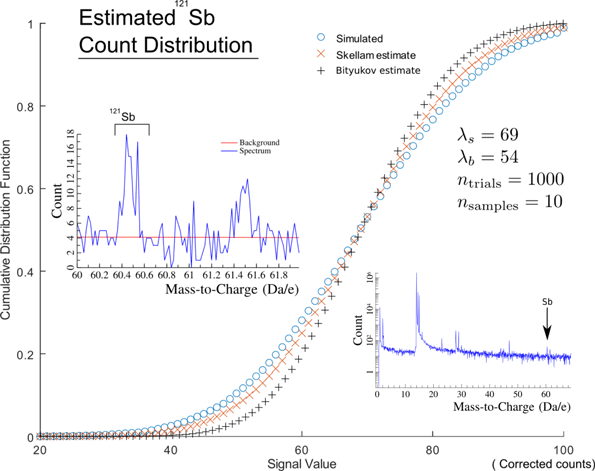Crossref Citations
This article has been cited by the following publications. This list is generated based on data provided by
Crossref.
El-Zoka, A. A.
Kim, S.-H.
Deville, S.
Newman, R. C.
Stephenson, L. T.
and
Gault, B.
2020.
Enabling near-atomic–scale analysis of frozen water.
Science Advances,
Vol. 6,
Issue. 49,
Gault, Baptiste
Chiaramonti, Ann
Cojocaru-Mirédin, Oana
Stender, Patrick
Dubosq, Renelle
Freysoldt, Christoph
Makineni, Surendra Kumar
Li, Tong
Moody, Michael
and
Cairney, Julie M.
2021.
Atom probe tomography.
Nature Reviews Methods Primers,
Vol. 1,
Issue. 1,
Luo, Ting
Kuo, Jimmy J.
Griffith, Kent J.
Imasato, Kazuki
Cojocaru‐Mirédin, Oana
Wuttig, Matthias
Gault, Baptiste
Yu, Yuan
and
Snyder, G. Jeffrey
2021.
Nb‐Mediated Grain Growth and Grain‐Boundary Engineering in Mg3Sb2‐Based Thermoelectric Materials.
Advanced Functional Materials,
Vol. 31,
Issue. 28,
Stender, Patrick
Gault, Baptiste
Schwarz, Tim M
Woods, Eric V
Kim, Se-Ho
Ott, Jonas
Stephenson, Leigh T
Schmitz, Guido
Freysoldt, Christoph
Kästner, Johannes
and
El-Zoka, Ayman A
2022.
Status and Direction of Atom Probe Analysis of Frozen Liquids.
Microscopy and Microanalysis,
Vol. 28,
Issue. 4,
p.
1150.
Gault, Baptiste
Schweinar, Kevin
Zhang, Siyuan
Lahn, Leopold
Scheu, Christina
Kim, Se-Ho
and
Kasian, Olga
2022.
Correlating atom probe tomography with x-ray and electron spectroscopies to understand microstructure–activity relationships in electrocatalysts.
MRS Bulletin,
Vol. 47,
Issue. 7,
p.
718.
Poplawsky, Jonathan D.
Pillai, Rishi
Ren, Qing-Qiang
Breen, Andrew J.
Gault, Baptiste
and
Brady, Michael P.
2022.
Measuring oxygen solubility in Ni grains and boundaries after oxidation using atom probe tomography.
Scripta Materialia,
Vol. 210,
Issue. ,
p.
114411.
Rousseau, Loïc
Normand, Antoine
Morgado, Felipe F.
Marie Scisly Søreide, Hanne-Sofie
Stephenson, Leigh T.
Hatzoglou, Constantinos
Da Costa, Gérald
Tehrani, Kambiz
Freysoldt, Christoph
Gault, Baptiste
and
Vurpillot, François
2023.
Introducing field evaporation energy loss spectroscopy.
Communications Physics,
Vol. 6,
Issue. 1,
Meier, Martin S
Bagot, Paul A J
Moody, Michael P
and
Haley, Daniel
2023.
Large-Scale Atom Probe Tomography Data Mining: Methods and Application to Inform Hydrogen Behavior.
Microscopy and Microanalysis,
Vol. 29,
Issue. 3,
p.
879.
Famelton, J.R.
Williams, C.A.
Barbatti, C.
Bagot, P.A.J.
and
Moody, M.P.
2023.
Point excess solute: A new metric for quantifying solute segregation in atom probe tomography datasets including application to naturally aged solute clusters in Al-Mg-Si-(Cu) alloys.
Materials Characterization,
Vol. 206,
Issue. ,
p.
113402.
Krämer, Mathias
Favelukis, Bar
El‐Zoka, Ayman A.
Sokol, Maxim
Rosen, Brian A.
Eliaz, Noam
Kim, Se‐Ho
and
Gault, Baptiste
2024.
Near‐Atomic‐Scale Perspective on the Oxidation of Ti3C2Tx MXenes: Insights from Atom Probe Tomography.
Advanced Materials,
Vol. 36,
Issue. 3,
